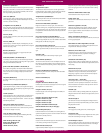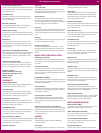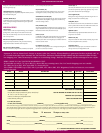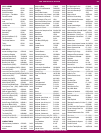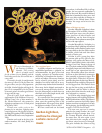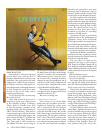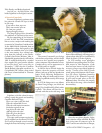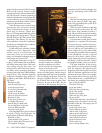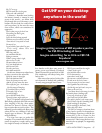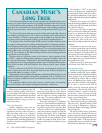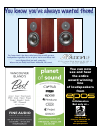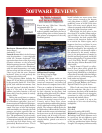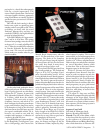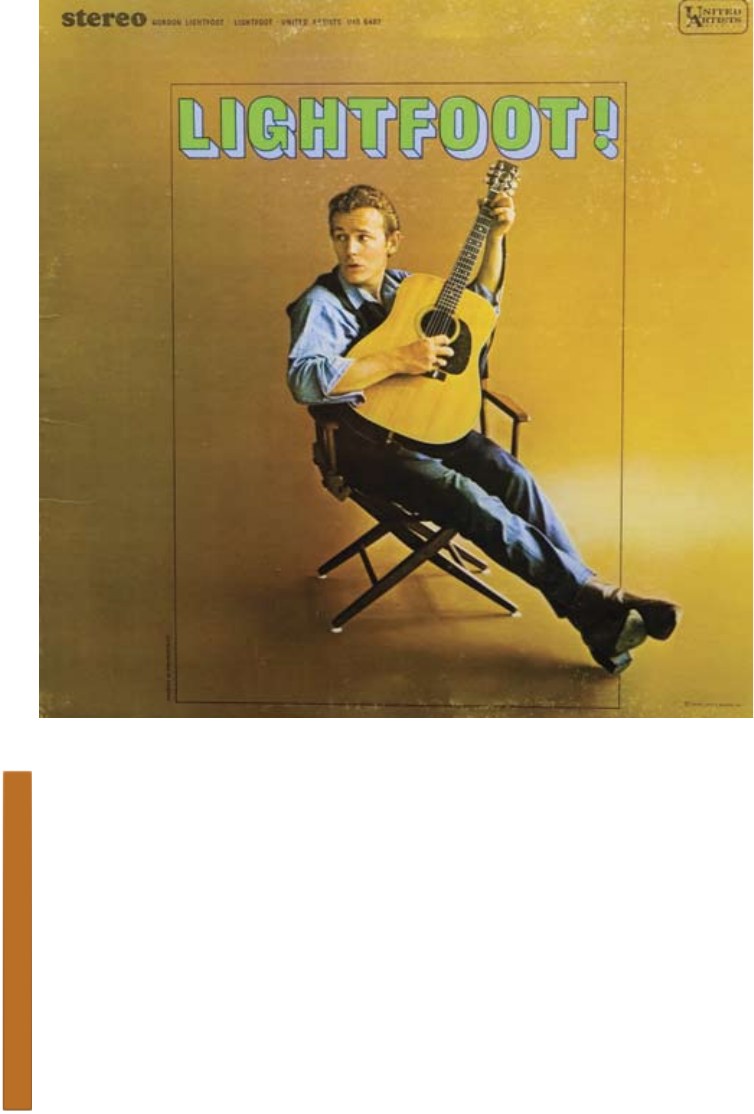
Feedback
Software
his winning performance at Toronto’s
fabled Massey Hall.
Inaugurated in 1894 and renovated
several times since, Massey Hall is
already celebrated for the artistic events
held there. Our young artist will make
singing there a habit. In the meantime,
to his piano courses he adds guitar les-
sons and becomes a self-taught drummer
as well. Despite his youth he is often
invited to sing on the radio, and in
oratorios and operettas.
In 1955 he writes his very first song.
He is then all of 17.
After high school he goes to Los
Angeles to study jazz orchestration
at the Westlake College of Modern
Music. Back in Canada, from 1958
to 1961, he becomes a member of the
Swinging Eight, who often perform on
CBC’s Country Hoedown. That leads to
numerous guest spots. He also becomes
a member of the Gino Silvi Singers, the
house chorale of CBC-TV’s Juliette. He
forms a duo with Terry Whelan, the
Two Tones, and in 1962 records two
live albums. The same year he sings at
the Mariposa Folk Festival, founded in
his home town of Orillia, which brings
together Canadian and international
folk-oriented artists. Over the years
the festival will go through successive
changes in name and orientation, but it
will survive, and Gordon Lightfoot will
sing there often, alongside such artists
as Joni Mitchell and Joan Baez.
The summer of 1963 finds Lightfoot
in England, where he hosts the Country
and Western Show on TV.
His career is rolling now.
A phenomenal ascension
One evening, in one of the coffee
houses that are everywhere in the 60’s,
Lightfoot is noticed by a talent scout
who is charmed by his fine baritone
voice and his expressiveness, and offers
to let him be heard on disc. He records
half a dozen songs, two of them his own
compositions: The Long River and Betty
Mae’s a Good Time Gal. It is about at the
same time that this handsome young
man with the imposing presence begins
to sing his own songs and accompany
himself on the guitar. He is seen more
and more often at folk music events in
Ontario, Quebec and the eastern USA,
and of course at the Mariposa Festival.
Ian Tyson and his then wife Sylvia,
a Canadian folk duo internationally
popular under the name Ian and Sylvia,
are the first to record Lightfoot’s songs,
including Early Morning Rain and For
Lovin’ Me, which become hits. It’s
enough for New York agent Albert
Grossman to sign him to a recording
contract at United Artists.
Grossman will play a particularly
significant role in the development of
Lightfoot’s career, for he is also Bob
Dylan’s agent, and he encourages him to
move, like Dylan, to the pop-rock genre.
His music will still, however, contain
elements of folk and country, and he will
be at ease moving from one to another.
Early Morning Rain has a wider inter-
national career too, becoming a hit for
French chansonnier Joe Dassin under the
title Dans la brume du matin.
The year 1965 is a major one for
Lightfoot. He sings at the Newport
Folk Festival in Rhode Island and in
New York City, and Marty Robbins will
sing his Ribbon of Darkness, a song about
a man pained by the loss of the woman
he loves.
Ribbon of darkness over me
Since my true love walked out the door
Tears I never had before
In Canada, Spin Spin is a major suc-
cess, and I’m Not Saying will be his first
chart hit. That song is popularized in the
US by country star Leroy Van Dyke.
Continuing his phenomenal rise,
he reaches new audiences thanks to his
songs being picked up by such estab-
lished stars as Harry Belafonte, Anne
Murray and Nana Mouskouri. Famed
US country singer George Hamilton IV
brings out an LP of his songs, Lightfoot
Country. Richie Havens and The Kings-
ton Trio sing Lightfoot too.
In 1966, with the release of his self-
titled album, Lightfoot becomes one of
the first Canadian singers to know glory
in his own country without having to
move to the United States. The album
will make him even better known as a
songwriter, and his songs are picked up
by Petula Clark, Stompin’ Tom Con-
nors, Johnny Cash, Jerry Lee Lewis,
64 ULTRA HIGH FIDELITY Magazine






